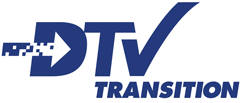DTV Transition Delayed ‘Til June 12

Barely a week into the new year, several stories broke suggesting that the National Telecommunications and Information Administration had run out of funding to provide any more coupons for the upcoming digital television transition. Responding to this news, the Obama administration began an immediate campaign to delay the transition, fearing that as many as six million households would be unable to meet the transition deadline.
After a new bill was drawn up, it was quickly rammed through the Senate. Yet, in a surprising turn of events the bill failed to make it through the House of Representatives. Undaunted, however, by this initial defeat, the bill was resubmitted, and on the second pass through, it was voted into law — 264 for, versus 158 against.
So, now that the DTV transition date has been officially moved back, to June 12th, 2009, what does that mean for the average consumer?
Well, for one, there’s going to be an awful lot of seriously confused consumers. For months now, the air waves have been saturated with the public service announcements urging consumers to get ready for the transition to DTV. When the first announcements were made that such a transition was in the works, there was a tremendous amount of confusion regarding the exact purpose of this transition, how it was to be implemented, how it would occur, and whether or not services would be lost.
The first batch of public service announcements weren’t very helpful; only those who had read about the issue in the paper, or on the Internet, knew what was going to happen, and how they might be affected, if at all. However, as the advertising campaign continued, a little more effort was put into explaining, in lay man’s terms of course, what was supposed to occur and how it would affect those with “rabbit ear” antennas.
At least one thing all those commercials was consistent: February 17th, 2009.
That was supposed to be the date that all analog over-the-air broadcasts had to cease or be converted over to digital. That date, February 17th, 2009, had been on the books for well over a year, and as we entered the new year, it seemed as if everyone at least knew that something important was to happen on that day.
Not wanting to upset any of its constituents, the government quickly put a financial aid program into place:
Between January 1, 2008, and July 31, 2009, all U.S. households will be eligible to request up to two coupons, worth $40 each, to be used toward the purchase of up to two, digital-to-analog converter boxes. The coupons may only be used for eligible converter boxes sold at participating consumer electronics retailers, and the coupons must be used at the time of purchase. (Please note that these coupons will expire 90 days after mailing). Manufacturers estimate that digital-to-analog converter boxes will sell from $40 to $70 each. This is a one-time cost.
The point of these converters would be to take the newly mandated digital broadcast and convert it back to an analog signal so that it can be processed by older generation televisions that lack a digital tuner.
Those in favor of the coupon program argued that every household in America should be able to receive at lease some sort of a television signal, so that, in times of emergencies, everyone can be kept informed and safe.
On the other side of the fence, the oft heard argument against the proposed delay was the the government ought to get this transition over with as soon as possible for the benefit of everyone involved: Congress has an economic crisis to deal with; broadcasters are tired of wasting precious revenue-generating airtime to keep the public informed; retailers can’t wait to clear the converter boxes of the shelves in order to start selling other electronics with higher profit-margins; broadcasting stations already have plans and equipment in place, and just like like everyone else in the industry they, too, are ready to just get this whole transition over and done with, once and for all.
Well, maybe it’s just me, but in my opinion, the government should have had far less of an involvement in this entire process than it has had; the industry could have taken care of this all on its own.
Not only is the delay going to cost the industry a lot of money, it’s also going to cost the tax payers, who will inevitable have to foot the bill for this ridiculous coupon program. The first coupons were made available at the start of 2008 – that’s more than a year of advanced notice for consumers to save up $40-$70 dollars for a one-time investment in a converter box, and that’s if they even need one in the first place.
If it’s really so much of a problem that several million households might be without TV for those few days it’ll take to figure out what’s going on, then the government should have told those people to just turn on their damn radios! Remember those? That little box, with the shiny antenna that makes noise. Putting that message out would have been far easier, and cost way less, and trying to explain where people can go to sign up for a government issued coupon.
Oh, and speaking of coupons, if those six million households can’t afford a radio, give them a $10 coupon to go get one, not a $40 coupon to get a converter box. So, assuming that there are about 100,000,000 households in the United States, and that about 6% of them need a coupon, issuing a radio coupon instead of a converter-box coupon would save the taxpayers about: (100,000,000)(0.06)(40-10) , or a 180,000,000 dollars – and that’s a conservative estimate! Saving money is so hard, isn’t it?